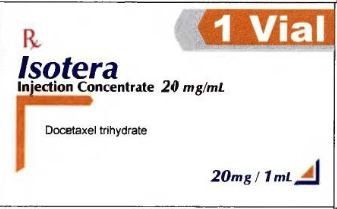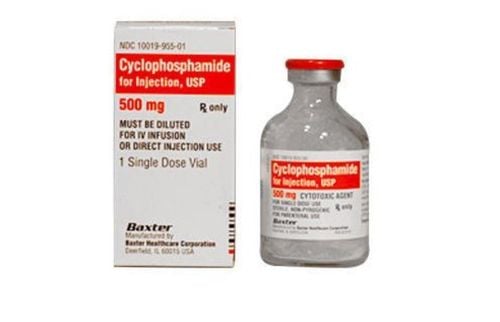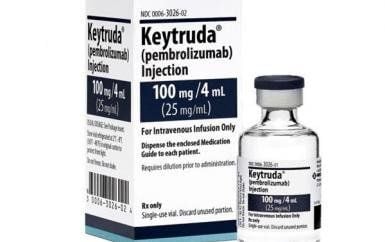This is an automatically translated article.
Osteonecrosis of the jaw is a serious complication of radiation therapy in the treatment of head and neck cancer. The disease can develop up to 5 years after radiation treatment. Common signs of osteonecrosis of the jaw include pain, difficulty chewing, swelling, oral-skin fistulas, and nonhealing sores.
1. What is post-radiation osteonecrosis?
Radiation therapy is one of the main treatments in head and neck cancer. Radiation therapy uses high-energy X-rays to destroy cells and kill cancer cells or stop them from reproducing.
The doses of radiation used to kill cancer cells can also damage normal cells. This is the main cause of the side effects of radiation therapy for head and neck cancer.
Radiotherapy-induced osteonecrosis is the phenomenon of bone death after radiation therapy. Patients with head and neck cancer can be treated with oral radiation. Therefore, the phenomenon of osteonecrosis in this group of patients mainly affects the jawbone. The higher the radiation dose a patient receives, the more likely they are to develop osteonecrosis of the jaw. Therefore, patients should only receive the lowest possible radiation dose to treat the disease and prevent serious side effects when treating head and neck cancer.
2. What are the symptoms of osteonecrosis of the jaw?
Osteonecrosis of the jaw after radiation therapy can cause the following symptoms:
Jaw pain Change in taste Stuck food Changes in sensation. Changes in voice Difficulty opening the mouth. Swelling Ulcers in the mouth or on the jaw An unusual fistula Infection Infections Teeth that do not align properly Fractures of the jaw unrelated to an accident or injury Exposed bones inside the mouth
3. Why does the patient have jaw bone necrosis after radiation therapy?
Osteonecrosis of the jaw is perhaps the most serious side effect of radiation therapy for head and neck cancer. This condition occurs in 3 to 10% of patients. This process can be spontaneous or traumatic, resulting in non-healing bone and soft tissue damage, followed by osteonecrosis. Mechanisms leading to osteonecrosis of the jaw include:
Radiation therapy can cause hypovascularity. This means that radiation can harm and sometimes destroy small blood vessels. These blood vessels deliver oxygen and nutrients to the jawbone and surrounding tissues to sustain life and heal after injury. Radiation from the treatment can damage the gums that cover the jawbone, leaving the bone exposed. Since the bone is not covered, there is a greater chance of infection and necrosis. Poor eating habits and poor dental practices are risk factors for osteonecrosis, and poor hygiene and nutrition also exacerbate osteonecrosis in patients.
4. How to prevent osteonecrosis of the jaw?
Osteonecrosis of the jaw is a side effect of head and neck cancer treatment. Here are a few ways patients can prevent osteonecrosis of the jaw:
Before radiation therapy to the oral area, the dentist will perform an in-depth examination of the patient's mouth and teeth. Damaged teeth that may become a problem in the future should be removed. Before starting radiation therapy, patients should take care of their teeth regularly. Use fluoride-containing oral care products. This should also be done after radiation therapy to prevent infection. Keeping teeth and gums healthy is important for proper healing. Patients should also eat a healthy diet, including low-sugar foods and beverages. Periodic dental examination: Periodic dental examination helps to detect dental abnormalities early and promptly treat. Make sure any cavities or infections in the mouth are treated as soon as possible If a patient has dry mouth, the dentist can suggest ways to replace saliva and keep the mouth moist. Note that a patient should never have a tooth extracted after radiation therapy without consulting an oncologist. The healing ability of bone tissue has been damaged by radiation therapy, so improper tooth extraction can lead to osteonecrosis of the jaw.
5. Treatment of jaw bone necrosis after radiation therapy for head and neck cancer
As a side effect when treating head and neck cancer, when there is necrosis of the jawbone, the treatment method will depend on the severity of each patient. Treatment options include:
Antibiotics : When there are signs of an infection, most doctors will prescribe an antibiotic to control and treat the infection. Surgery: Surgery may be used to remove dead bone. The severity of the necrosis will determine the type of surgery. The patient may need to take bone and tissue from another part of the body to reconstruct areas of bone that have been removed. Hyperbaric oxygen therapy (HBO): In some cases, hyperbaric oxygen therapy is given before or after surgery is performed. Hyperbaric oxygen therapy involves breathing pure oxygen in a pressurized room. It is carried out in a special chamber where the pressure inside is higher than the normal pressure of the atmosphere. The higher pressure allows more oxygen to enter the bloodstream, which can help heal damaged tissue and infection. Hyperbaric oxygen therapy is used in conjunction with wound care and surgery. A treatment plan usually includes 20 treatments before surgery and 10 treatments after surgery. This treatment plan can be tailored based on the patient's situation and response to the osteonecrosis to hyperbaric oxygen therapy. After radiation therapy for head and neck cancer, your doctor may also recommend that you undergo hyperbaric oxygen therapy before any teeth are removed. In conclusion, osteonecrosis of the jaw is a rare but very dangerous side effect of radiation therapy for head and neck cancer. Bone necrosis will seriously affect the patient's quality of life. Patients can consult with specialists to develop the best care plan to help prevent and treat osteonecrosis of the jaw.
Please dial HOTLINE for more information or register for an appointment HERE. Download MyVinmec app to make appointments faster and to manage your bookings easily.
Source: oncolink.org













